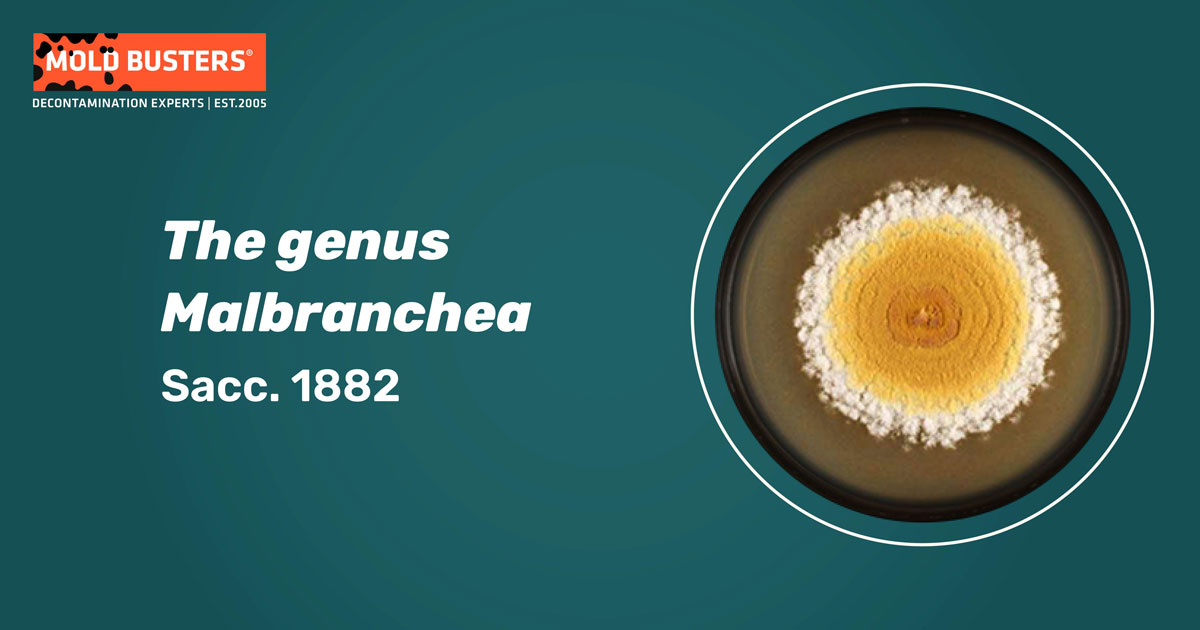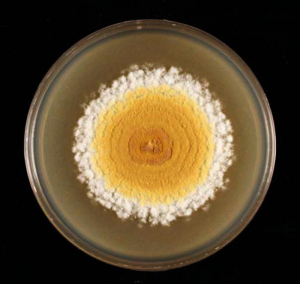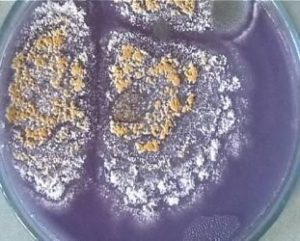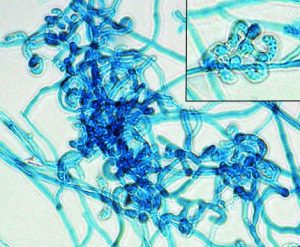Sacc. 1882
Species of the genus Malbranchea have been known since the 19th century. This genus includes mesophilic and thermophilic organisms. Although they have been known for a long time, little is generally known about the species. They do not cause significant household damage, and there are only a few reported cases of diseases caused by these species.

What is Malbranchea?
Saccardo first described species of the genus Malbranchea in 1882. These fungi are like many others isolated from soil, droppings, and disintegrated vegetation (1). Most species are mesophilic, although there are also thermophiles (2). Colonies of Malbranchea sp. develop rapidly at 25℃. The colonies may be flat or furrowed. Their texture varies and can be cottony, woolly, or powdery. Their color also varied from white, dark red to brown, and sometimes can be dark gold.
Malbranchea sp. is microscopically very similar to the fungus Coccidioides immitis due to the existence of the same structures, which has caused problems in the past. However, scientists have proven through a series of tests and experiments that fungi still differ in small differences in certain structures (1).

Although species of the genus Malbranchea are taxonomically close to human and animal pathogens, little is known to cause the disease, and few cases have been reported, especially in the literature (3). Many studies have been done to investigate species of this genus better and to point out possible infections. A study was performed on 245 patients with fungal infections of the nails and skin, and Malbranchea sp. was isolated in only 1% of skin samples. In other studies, only 0,3% of Malbranchea sp. cases showed coexistence with primary pathogens of tuberculosis patients (2).
Malbranchea species
The genus Malbranchea numbers a lot of species, and some of them are not human pathogens, while some can cause diseases. It is assumed that molecular analyzes will reveal some more species of this genus.
Some of the more prominent Malbranchea species include Malbranchea compacta, Malbranchea longispora, Malbranchea albolutea, Malbranchea filamentosa, Malbranchea stricta, Malbranchea concentrica, etc (2). The most famous and best-researched are Malbranchea cinnamomea and Malbranchea pulchella, so that they will be described a little here as well.
Malbranchea cinnamomea is a thermophilic fungus. The minimum temperature for its growth is 20℃. This fungus is isolated from higher-temperature environments, most often from sun-heated desert soil. It has the capability of degrading plant biomass (4). Colonies grown in the laboratory at 45℃ were sulfur yellow, dense, smooth with a few outer folds with thick, creamy yellow bundles of hyphae (5). M. cinnamomea produces an antibiotic named malbranicin, which has antimicrobial activities against Gram-positive bacteria (4).

Malbranchea pulchella is not a thermophillic fungi. It has a worldwide distribution and is isolated from soil and decaying vegetation. The colonies are white, sulfur yellow to brown. The reverse of the colony is a reddish-brown, often reddish diffusible pigment (6). So far, only two cases have been reported in which Malbranchea pulchella has caused human disease, although it is not considered a pathogen (7). This species is also important for its ability to produce several enzymes, and the most important of these are thermostable cellulolytic enzymes (8).

Is Malbranchea mold dangerous?
Any mold is potentially dangerous. Mold can grow everywhere, on a variety of different surfaces. The type of mold that grows in the indoor environment is especially dangerous for people who have allergies. This is because they produce spores that spread through the air and reach human respiratory organs very easily. In addition to the negative consequences for humans, mold can destroy pieces of furniture, plants, and food. Although the literature has not reported that Malbranchea mold is dangerous or toxic, care should still be taken.
Malbranchea treatment
If you happen to see mold anywhere in your household, you should remove it immediately. Even a small amount can gradually spread and significantly affect your health. To prevent the growth of mold indoor, the best option is constant moisture control. It is also important that the house is ventilated and clean.
Mold can be removed by wiping the surface, preferably with antifungal agents. Even though you have removed the mold visible to the naked eye, spores and mycelium remain. Therefore, it is important to ventilate the room. The best and safest solution for removing mold is to seek help from a professional mold removal service, and they can also give you helpful tips in preventing mold. So, call Mold Busters and make an appointment.

Did you know?
The #1 toxic mold type found in kitchens in Canada is the Penicillium/Aspergillus mold group?! Find out more exciting mold stats and facts on our mold statistics page.
References
- Doctor fungus – Malbranchea Retrieved from drfungus.org.
- Rodrigez-Andrade E, Cano-Lira J.F., Wiederrhold N, Perez-Cantero A, Guarro J, Stchigel A.M. (2021). Rare malbranchea-like fungal isolated from clinical specimens in the United States of America. Research Square.
- Wakana D, Hosoe T, Wachi H, Itabashi T, Fukushima K, Yaguchi T, Kawai K. (2009). The cytotoxic and antifungal activites of two new sesquiterpenes, malfilanol A and B, derived from Malbranchea filamentosa. The journal of Antibiotics 62:217-219.
- Healing Mushrooms – Malbranchea cinnamomea. Retrieved from healing-mushrooms.net.
- Ajmera S, Kotsware Rao V, Ranipadmini V, Ramchander M, Girisham S. (2019). Isolation and Molecular Characterization of Thermophilic Coprophilous Fungus Malbranchea cinnamomea GSMBKU from Goat Dung. Journal of Rare and Applied Microbiology 13(4):2227-2233.
- The University of Adelaide: Mycology online – Malbranchea pulchella. Retrieved from mycology.adelaide.edu.au.
- Brenda T.J., Corey J.P. (1994). Malbranchea pulchella fungal sinusitis. Official Journal of American Academy of Otolaryngology-Head and Neck Surgery 10(6):501-504.
- Ribeiro L, De Lucas R.C., Vitcosque S.L., Ribeiro L.F., Ward R.J., Rubio M.V., Damasio A.R.L., Squina F.M., Gregory R.C., Walton P.H., Jorge J.A., Prade R.A., Buckeridge M.S., Polizeli M.T.M. (2014). A novel thermostable xylanase GH10 from Malbranchea pulchella expressed in Aspergillus nidulans with potential application in biotechnology. Biotechnol Biofuels 7, 115.

Get Special Gift: Industry-Standard Mold Removal Guidelines
Download the industry-standard guidelines that Mold Busters use in their own mold removal services, including news, tips and special offers:

Written by:
John Ward
Account Executive
Mold Busters
Fact checked by:
Michael Golubev
General Manager
Mold Busters
